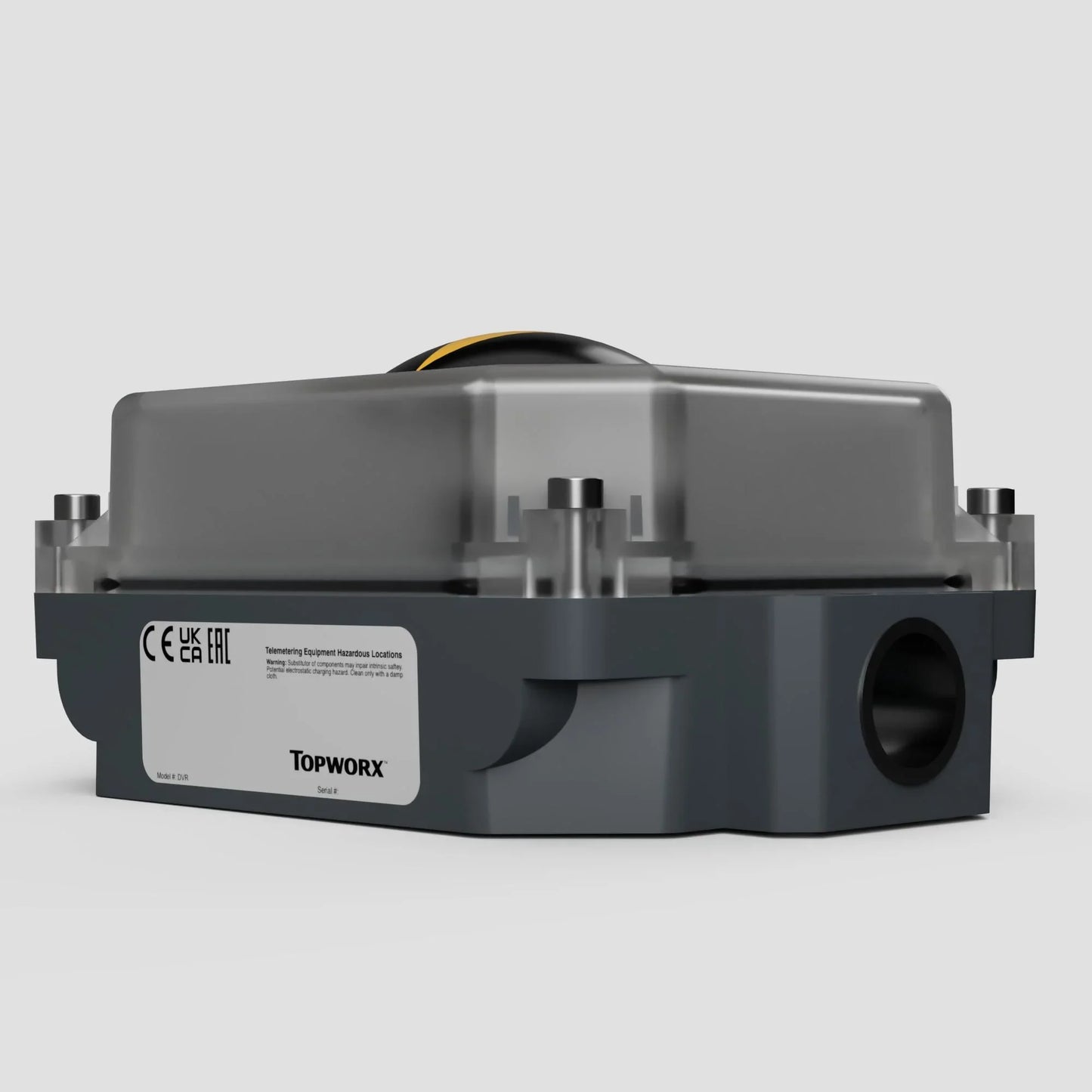Topworx Switchbox
Topworx Limit Switch box DVR-M2WLNMM Valve Monitor
Topworx Limit Switch box DVR-M2WLNMM Valve Monitor
Couldn't load pickup availability
The Topworx DVR-M2WLNMM Limit Switch Box is a high-performing valve monitor tailored for industrial applications where precision and durability are essential. Featuring a compact engineered resin enclosure and a yellow/black low-profile position indicator, it provides accurate local and remote feedback for valve operations. Its dual mechanical SPDT switches, NAMUR-compatible design, and 316 stainless steel hardware make it suitable for a range of environments, including corrosive or high-impact areas.
Key Features
-
Engineered Resin Enclosure
Designed for impact resistance and long-lasting performance, the enclosure offers reliable protection in challenging environments, such as chemical processing or outdoor installations. -
Clear Low-Profile Yellow/Black Indicator
Provides a highly visible and intuitive display of valve position, enabling quick checks without requiring close inspection. Its low-profile design minimizes obstructions in tight installations. -
Mechanical SPDT Switches
Equipped with two mechanical SPDT (Single Pole, Double Throw) switches, the unit ensures dependable feedback for valve positioning, supporting both normally open (NO) and normally closed (NC) configurations. -
NAMUR-Compliant
The NAMUR-compatible mounting interface ensures easy integration with a variety of actuators and valves, making it a flexible choice for many systems. -
316 Stainless Steel Hardware
Corrosion-resistant 316 stainless steel components extend the product’s lifespan in environments exposed to moisture, salt, or aggressive chemicals. -
Dual M20 Cable Entries
Offers straightforward wiring options with two M20 resin cable entries, simplifying installation and connection to control systems. -
Silicone Seals for Enhanced Protection
High-grade silicone seals provide a dependable barrier against dust, water ingress, and temperature variations, ensuring uninterrupted performance over time.
The DVR-M2WLNMM is a practical choice for industries requiring reliable valve monitoring, combining durable materials with a design that simplifies installation and operation. Ideal for use in petrochemical, water treatment, and general industrial applications, it is a dependable solution for ensuring accurate valve position control.
Share

Enquire Online!
FAQ's
What is the difference between a valve and an actuator?
What types of actuators are available?
The main types of actuators are:
Pneumatic actuators – use compressed air for fast, reliable operation.
Electric actuators – use electrical power for precise control.
Hydraulic actuators – use fluid pressure for high-torque applications.
Each type offers unique advantages depending on the environment, media, and system control needs.
How do I choose the right actuator for my valve?
To select the correct actuator, consider:
Valve type and torque requirement
Power source available (air, electric, or hydraulic)
Operating environment (temperature, humidity, hazardous area)
Control signal type (on/off or modulating)
Matching actuator torque and compatibility with the valve’s ISO mounting ensures reliable performance.
What are the main types of valves used in automation?
The most common valves in automated systems include:
Ball valves – for tight shutoff and quick operation.
Butterfly valves – for larger flow control with compact design.
Globe valves – for precise throttling and flow regulation.
Check valves – to prevent backflow.
Gate valves – for full bore flow isolation.
What’s the difference between a double-acting and spring-return actuator?
Double-acting actuators use air (or power) to both open and close the valve.
Spring-return actuators use air to open (or close) the valve, and a built-in spring to automatically return it to a safe position when power or air is lost — ideal for fail-safe operation.
How often should valves and actuators be serviced?
Regular maintenance intervals depend on operating conditions, but a good rule of thumb is to inspect every 6–12 months.
This includes checking for leaks, lubrication, seal wear, and actuator responsiveness to prevent unexpected downtime.

